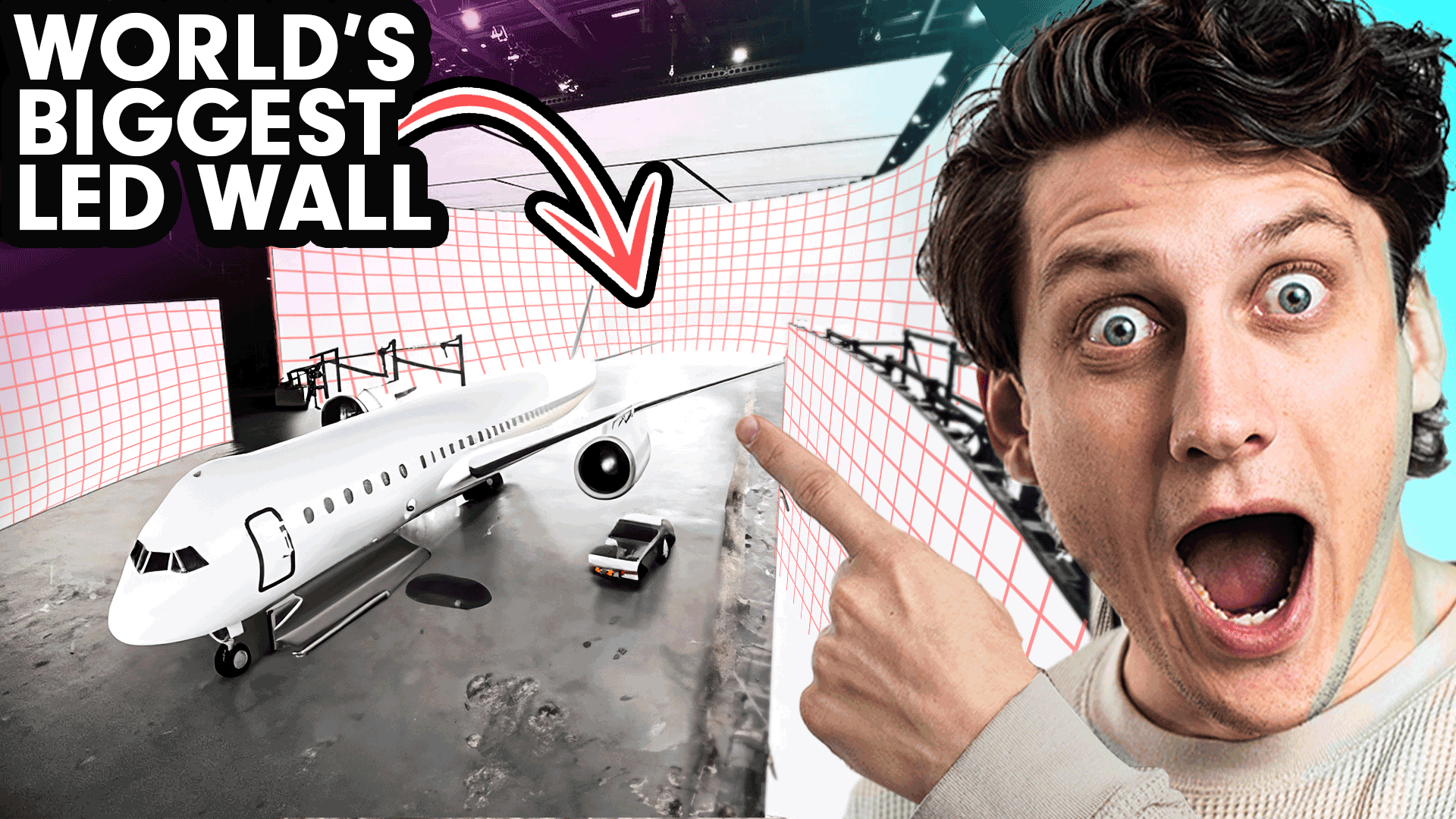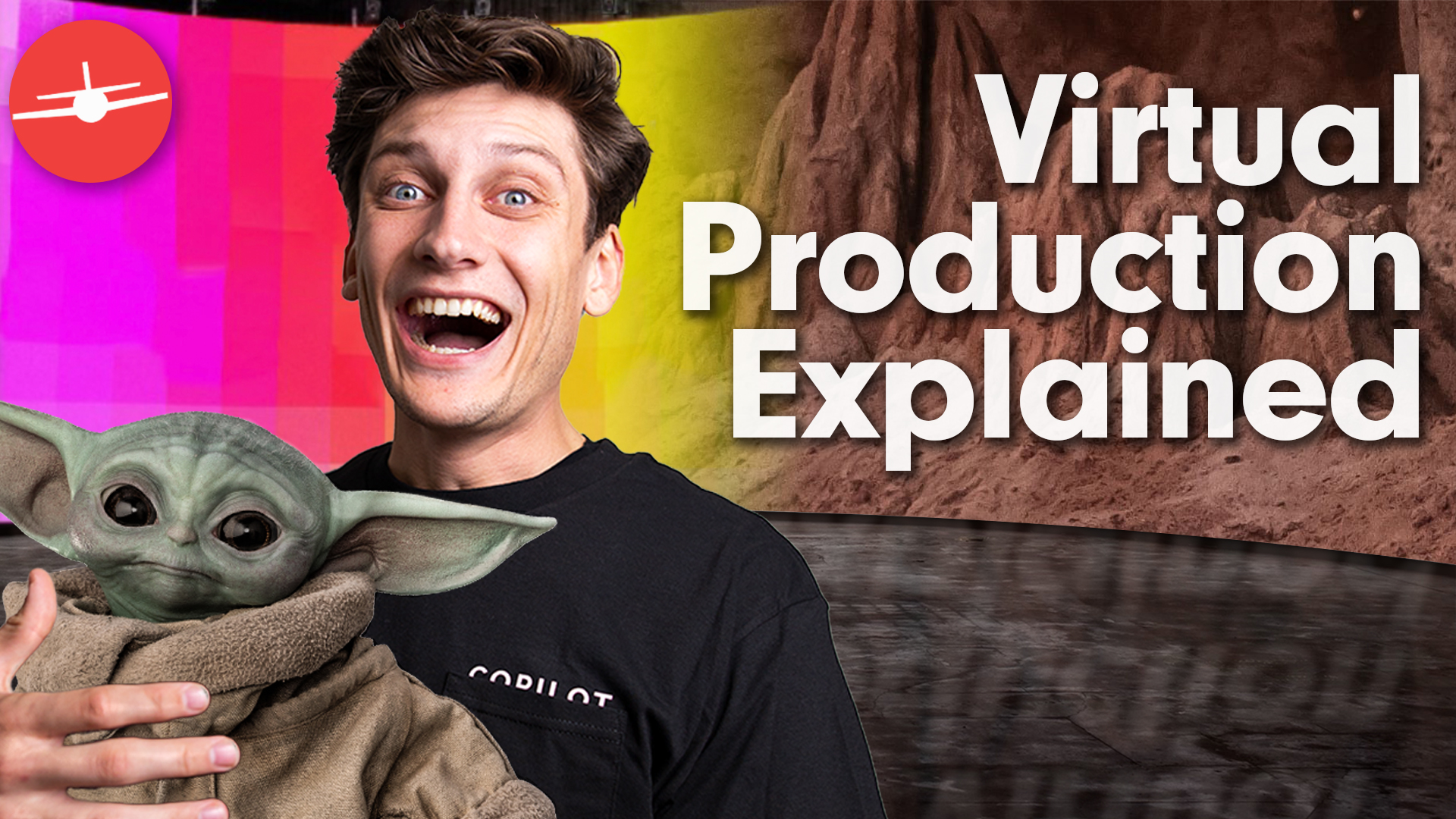
A new insane technology emerged over the past couple of years called Virtual Production, which utilizes LED Walls instead of green screens. It did not take long for studios all across the world to start building their own LED Wall stages to rent out to production companies to bring their creative ideas to life.
Some companies decided to go very large, some very small, and some landed neatly somewhere in between with the size of their LED Walls. But, have you heard about the wall so colossal it could fit a commercial airplane?
Yeah, I'm not kidding!
Just a couple of months ago, Nant Studios unveiled their Melbourne stage and it is the largest LED volume in the world. This stage is a whopping 25,000 square feet, featuring 6,000 LED panels stacked 40ft high and stretching 289ft across.

Honestly, it's a bit hard to comprehend how massive that actually is unless you’re standing right in it.
Now, here's the big question: does bigger necessarily mean better?
Let’s take a deep drive together.
While we haven't experienced the behemoth that is the Nant’s Melbourne stage in person, the CoPilot team has worked on both huge LED volumes and smaller indie stages. So, which size works best? Let's break it down.
Small LED walls have some serious advantages. First off, they're more affordable, meaning you won't constantly feel the pressure of hosting major productions just to pay off the hefty investment. Plus, setting them up is a breeze. If your wall is around 16 feet or less, you can get away with only using ground support. No need to call in an engineer to design custom rigging points from the ceiling to support that LED wall.
Also, it’s important to note, small LED walls are super portable. Unlike their big brothers, you can easily take them on the road if needed. And guess what? They still deliver realistic lighting and real-time rendering, and with the added bonus of XR techniques like set extensions you get the best of both worlds.

But hey, it's not all sunshine and rainbows. Small LED walls do have their downsides. Due to their size, they can limit your shooting capabilities forcing the camera to stay closer to the LED wall, restrict your lens choices, and force your talent to perform within a precise area.
Plus, shooting closer to the wall increases the chance of moiré appearing on the screen -- Not sure how moiré impacts your LED wall production, don't worry we've got you covered, learn more about the Silent Killer of Virtual Production here.
And here's the kicker: you might accidentally shoot outside the wall's coverage, leaving you with two options – either fixing it in post or scrapping the shot altogether.
So why limit yourself? Why not just GO BIG?

Opting for a mega stage gives you the most immersive environment, the most authentic-looking shots, and allows for a wide range of camera moves. You can pretty much shoot as wide as your heart desires. Sounds incredible, doesn't it?
But, again, there is always a catch. Building and running a mega stage is a whole different ball game. The price tag alone will leave your wallet crying. And we're not just talking about the initial cost – it's the ongoing maintenance and operational expenses that can drain your budget. Oh, and don't forget about the setup requirements. With anything over 16 feet tall, you'll need certified rigging points, more power consumption, and more processors.
More moving parts means more potential places for things to go wrong and price is no joke, finding the balance between rental and booking rates can be such a difficult tasks that many stages find it difficult to to keep up.
Imagine needing to be booked every single day of the year just to cover the costs? It's mind-boggling, really.
When it comes to solving for the perfect size LED volume we’ve turned to an expert.
Noah Kadner has shed some light on the size-price ratio in the world of LED stages for us. We're about to uncover the goldilocks zone, that sweet spot where the price is just right, striking that perfect balance between cost and functionality. It's time for the big reveal! Noah Kadner’s verdict is……there is NO perfect size, anticlimactic, I know. You have to factor in way too many logistics to ever be able to come up with the answer to this but that being said, too small and too big is usually never the answer and that goldilocks zone will be different for every company.
Here's the scoop: bigger isn't always better.

Building a massive studio just for the sake of being big can come with its fair share of challenges down the line.
Now, don't get me wrong—I'm not implying that's what Nant did. In fact, Nant's purpose-built studio in Melbourne was backed by government funding, with the goal of making it a grand production spectacle. Plus, they're partnered with Epic Games, so they have a lot of exciting plans on the horizon.

But here's the real deal: No matter the size of the studio, it has to be purpose-built. If you construct a monstrous volume for one specific production, what happens when another production comes along with entirely different requirements and stage design? Will your colossal setup be left gathering dust?
Let's be real— Netflix’s Avatar: The Last Airbender might not need the exact same setup as Disney’s The Mandalorian.
And on top of all that, the technology is constantly evolving, and you need to stay on top of the game. Is your LED volume future-proofed with the latest tech so that you won't be scrambling for updates anytime soon?
Or maybe, just maybe, it's better to go for versatility. Have a wall that can adapt and meet the needs of multiple productions. A wall that's mobile enough to reconfigure whenever necessary or even move to another studio if the situation demands it. Flexibility is always key!
These are the vital questions we need to be asking ourselves. As cliché as it may sound, when it comes to size, bigger may not always be better. It's all about how you make the most of what you've got. So, let's be wise, let's be adaptable, and let's make the most out of our LED stages in this ever-evolving world of virtual production!





